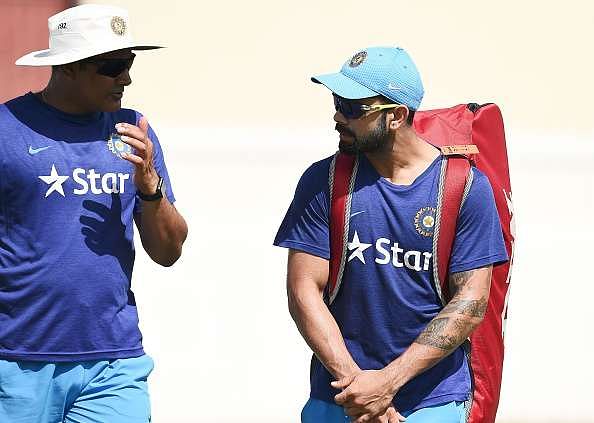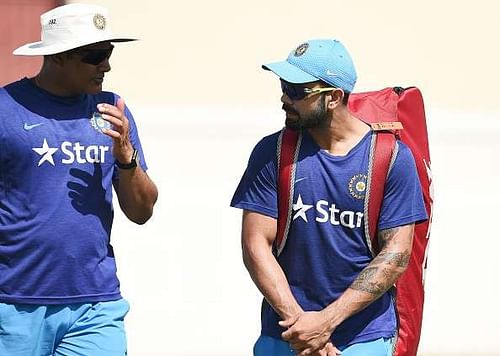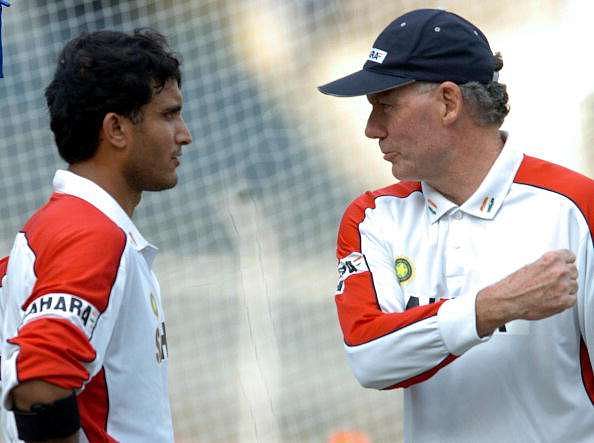
Indian cricket, what is wrong with you?
Pervasiveness and obscurity are the two extremes that govern the cahoots of the ‘who’s who’ of Indian cricket.
While the differences between two of India’s most enigmatic personalities have been made to spread like wildfire, with everything not said made into breaking developments, a certain historian’s ‘letter’ to the BCCI upon his resignation as a member of the committee appointed to rein in the board’s unscrupulous activities has been treated as just another ‘open letter.’
The problem with open letters is that they are open – to public scrutiny and the authority’s negligence. For whatever is out in the open needs not be protected, and whatever is unknown needs to be kept so.
Otherwise, who would have, looking at the way India had been brushing aside opponents, thought that Anil Kumble would not be given another term on his own merit?
Who would have thought, after all the chest-thumping and the ‘fair and square’ selection of the new Indian coach last June, that fire and fire would not match but cut each other out?
Obscurity, you see, is a deadly relief. Knowing things you shouldn’t be knowing in the first place is both a relief and a threat. You are relieved, on one hand, knowing (or not knowing rather) that things are exactly the way you see them, and you’re threatened, on the other hand, thinking what if there is something else, or someone else?
And once you know what you shouldn’t have known, you know that what you had known wasn’t what you should have known. Too many knowns and unknowns? That’s exactly how an Indian cricket fan would be feeling at the moment.
Two days before the clash that has now become paramount to any other thing an Indian cricket fan would place his fingers on, he would have to think if the team taking on Pakistan on June 4 would be on the same page or not.
The chutzpah could not have been more apparent. Assuming that there indeed were differences between the captain and the coach, the BCCI felt that Kumble’s vacation and Virat Kohli’s fall from the Zeus’ lap in the most embarrassing of manners were more important than utilizing the months of April and May to sort out the same.
Instead, they chose an astute one-week window to advertise the post and invite applications from prospective candidates. One week, mind you, reduced from a fortnight, which was the window the last time this post was up for grabs.
Quite understandably, six candidates – including Kumble, who had been given a direct entry to the process – have applied this time, compared to the 57 applications the BCCI had shortlisted last year.
If the timing of the arrangement beckons questions, the time-frame given for the best coaches across the world to apply for one of the most sought-after positions in world cricket invites ridicule.
Also, who would, in his right frame of mind, be willing to apply for India coach given that one of the most successful tenures has been shown such an unceremonious ending?
If for once you believe that Kumble indeed needs to step down from the role owing to his ‘headmasterly’ nature, in what light would it show the BCCI’s cricket advisory committee – comprising of Sachin Tendulkar, Sourav Ganguly, and VVS Laxman – who were the ones responsible for Kumble’s selection, as?
Would the fan not trust the judgment of three of Indian cricket’s finest? Would he, instead, believe whatever has been brewing up in the news which none of the players have spoken anything about?
What picture would two one-year-long stints of consecutive Indian coaches – if you view Ravi Shastri with the same lens – paint on the psyche of an Indian fan? That they aren’t capable enough? Should there be a hushed procedure to bring in a foreign coach, again?
Keeping the rhetoric aside, a hushed procedure to bring in a foreign coach had proved out to be perilous in the past.
At the heart of the matter back then was a similar captain-coach feud, but it was allowed to escalate to an extent that perhaps made Sachin Tendulkar reveal in his biopic a decade later that the Indian team that had played the 2007 World Cup didn’t have all players on the same page.
Obscurity, you see. What if Tendulkar, or anyone else for that matter, had revealed the information just after India’s ouster from the tournament? Not knowing is indeed a blessing.
What we still don’t know is the extent of the differences between Kohli and Kumble, and whether it has, in any manner, affected the morale of the team in a tournament it is playing as the defending champion.
What we do know, however, is that the Indian team has, and perhaps always will belong to the captain and not the coach. Kohli’s perceived dislike for the coach has created ripples across the team management’s corridors and has invited introspection.
Halt, and imagine for a moment what would have happened if Kumble had raised similar problems with the captain. Would there have been a repeat of what happened to Ganguly under Greg Chappell? Moreover, would Ganguly, himself at the helm of affairs now, have allowed such a thing to happen?
The answer, at this point in time in Kohli’s career, looks to be a resounding no, but it does set a necessary precedent for the future. Does an Indian captain, or a star player for that matter have the right to decide who should be the coach of the side?
Should a coach align himself with the captain’s thinking and thereby compromise on his own plans that he had presented to those who had selected him in the first place? Player favouritism has always existed in Indian cricket and barring the Chappell tenure, which was an exception, players have, more often than not, had a say in who coaches the side.
Maybe Guha was right when he said that the ‘superstar culture’ has adversely affected Indian cricket. Maybe Tendulkar was right too when he mentioned in his biopic that Chappell’s attitude didn't align with that of the senior cricketers.
However, what isn’t right for sure is the manner in which Kumble has been sidelined despite the way the team has championed the world under his tutelage. At this juncture, the BCCI needs to decide whether performance alone is the yardstick to measure the capabilities of a player or a coach, or whether he needs to be aligned in the right manner with the right men.
Is there no room for constructive criticism inside the dressing room? Are thoughts, opinions, and ideas not challenged in the right spirit and the only way to resolve a dispute is by cutting off the person at the other end? Is the captain superior to the team?
These may or may not be rhetorical questions, but the answers to these would determine how Indian dressing rooms in the future function.
One legend is being ousted, perceivably at the hands of a to-be legend, the administrators appointed by the Supreme Court of India to cleanse the mess of the board are resigning, and three of India’s finest are being questioned for their judgment skills.
From the highs of the World No. 1 status, this is, to be honest, not a low but a departure. A departure from the feeling of India being the torchbearers of the player-administration unity, despite the absence of a players' association.
When it looked as if everything was right with Indian cricket, that finally, India had a domestic coach best-suited to the needs of the team and their aspirations – Kumble vouched for an increase in the pay of Grade A contracted players – and that in a fiery coach and an aggressive captain, India had just the right combination, things were laid to waste.
Pervasiveness is a boon only for as long as it doesn't reveal what it shouldn't. Wildfire is termed wild for a reason; it consumes everything that gives birth to it. It has happened in the past, most recently in 2013, and the damage control is still on.

